Discovery Pool
The Discovery Pool research grant program was established by CNHA to encourage and provide funding for research partnerships between qualified scientists and our federal NPS, BLM, and USFS partners in southeastern Utah.
Since its inception in 2007, CNHA’s Discovery Pool has awarded over $1 million in grants.
Apply
The application for 2026 will be available soon.
If you are interested in applying for a Discovery Pool Grant for 2026, applications are due to CNHA by 5pm on November 1st.
If you would like assistance with understanding the application process and/or the goals and desires of CNHA with regard to this program, please address an email query to discoverypool@cnha.org at any time during the year. While we sincerely wish to help you create a successful proposal, please note that this is not an invitation for us to pre-review your application prior to the submission deadline.
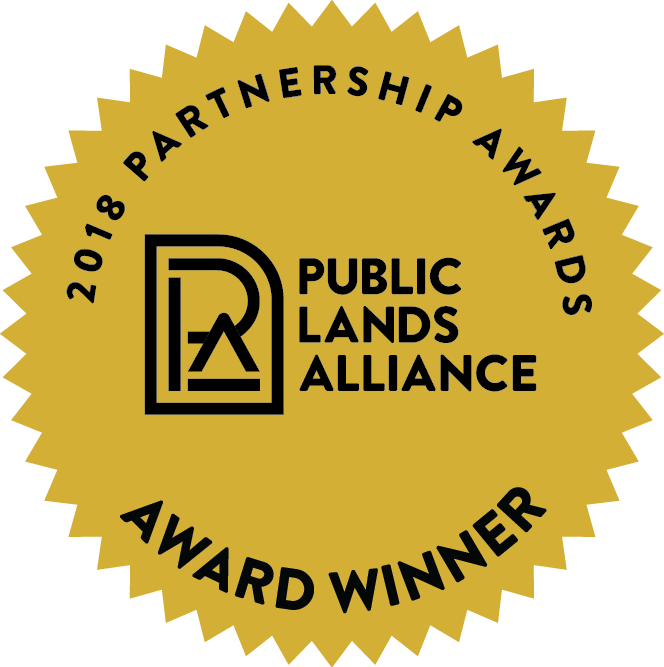 Goals
Goals
The goals for the Discovery Pool grants are:
- Encourage scientific research that informs the interpretive, educational and resource management programs of our federal agencies. This includes hypothesis-driven research, surveys and monitoring.
- Provide seed money and/or matching funds to assist public land partners in obtaining larger grants for work consistent with Goal 1.
- Promote an understanding of the intricate cultural and natural resource complexities found on federally administered lands of this region.
- Provide information that CNHA and partner agencies can use to educate visitors on the value and fragility of the natural and cultural resources of this region.
- Facilitate tribal engagement in scientific efforts.
Projects
2025
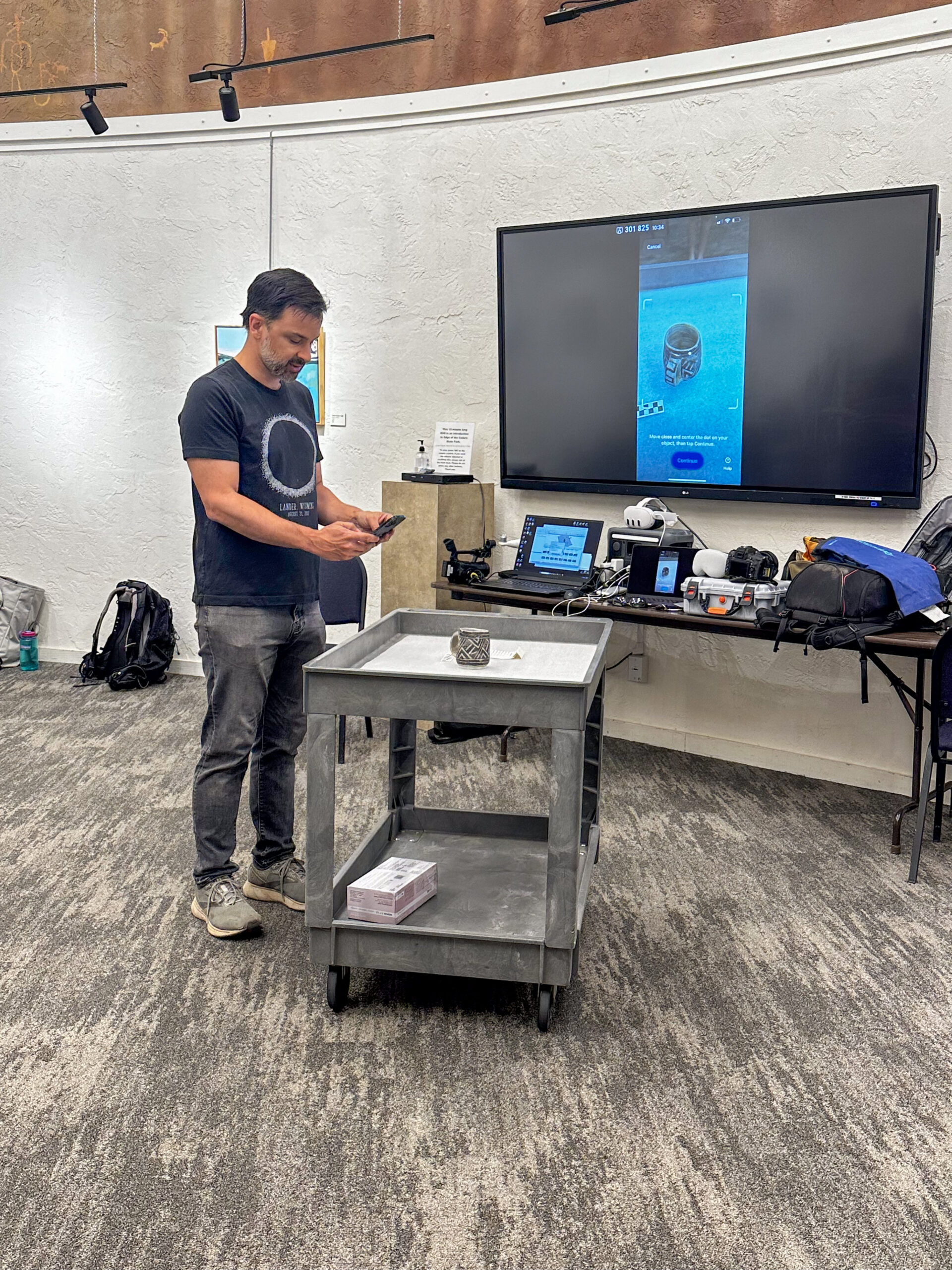
Bears Ears Digital Cultural Heritage Initiative Phase II ($24,999)
Principal Investigator: Eric J. Heller, PhD, University of Southern California
Agency: U.S. Forest Service and Bureau of Land Management

Uncovering and Understanding Earth's Last Dinosaur Ecosystem ($23,223.60)
Principal Investigator: Natalie Toth and Dr. Tyler Lawson, Denver Museum of Nature and Science
Agency: U.S. Forest Service

Microbial Associations of Native Species and their Restoration Cultivars ($17,354)
Principal investigator: Carla Roybal, United States Geological Survey (USGS)
Agency: Bureau of Land Management

Lichen Diversity - an Overlooked Treasure in the Nationally Significant Sand Flats Recreation Area ($20,716)
Principal investigator: Dr. Steve Leavitt, Brigham Young University
Agency: Bureau of Land Management
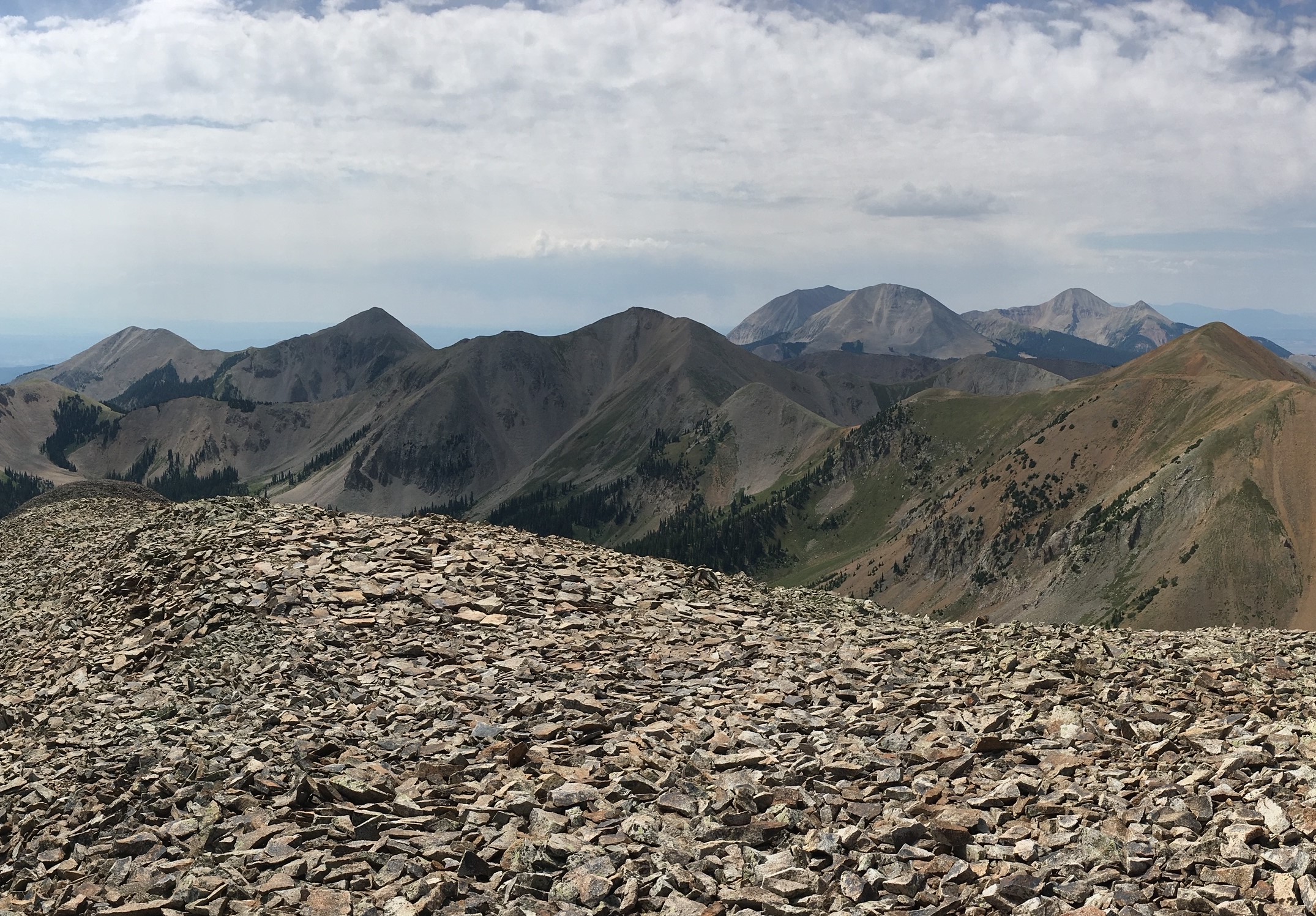
Last Ice of the La Sal Range ($24,998)
Principal investigator: Leif Anderson, University of Utah
Agency: U.S. Forest Service
2024

Bears Ears Digital Cultural Heritage Initiative ($24,994)
Principal Investigator: Eric J. Heller, PhD, University of Southern California
Agency: U.S. Forest Service and Bureau of Land Management

Identifying Resilient Food Webs in a Changing West ($23,980)
Principal Investigator: Dr. Moria Robinson, Assistant Professor, Utah State University
Agency: U.S. Forest Service

Assessing Pinyon-Juniper Mortality Across Southeast Utah Group National Parks ($22,110)
Principal investigator: Seth Munson, USGS, Southwest Biological Science Center (SBSC)
Mike Duniway, SBSC
Tara Bishop, Utah Valley University
Agency: National Park Service
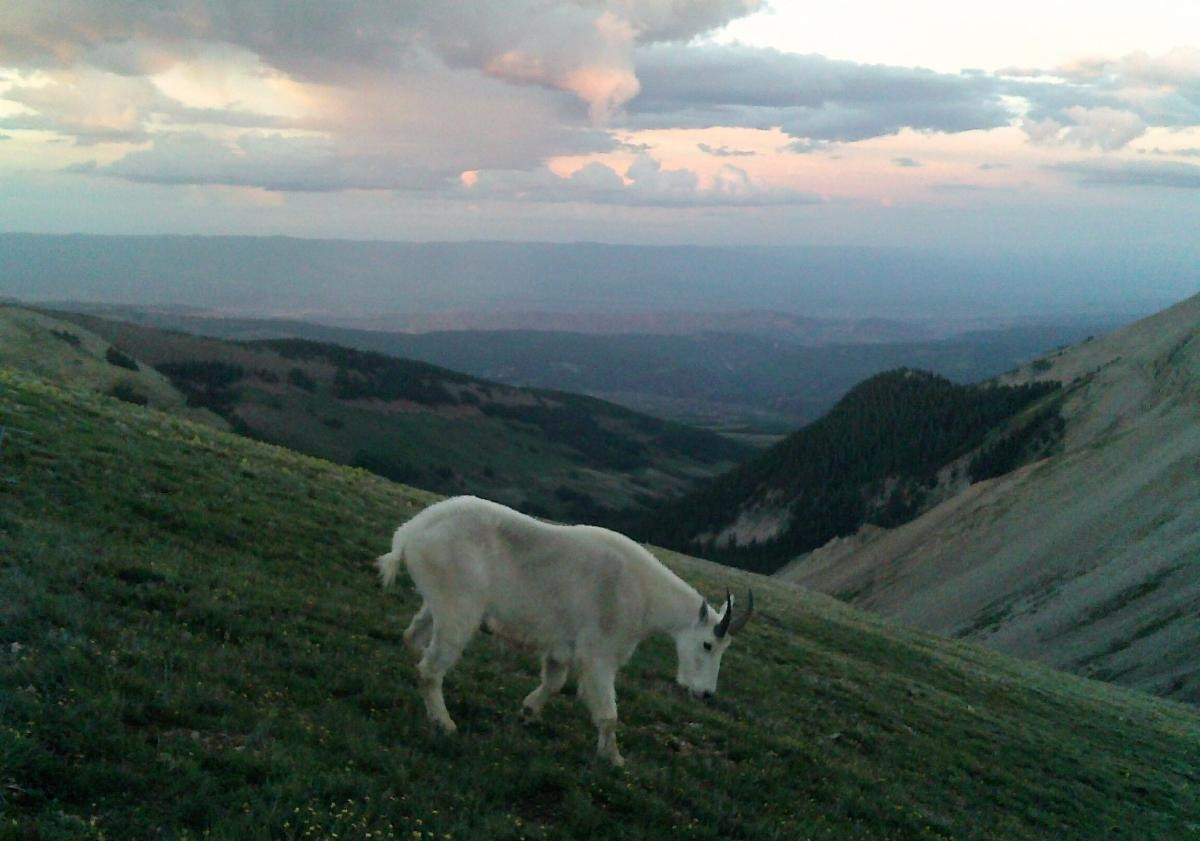
Ecological Interactions between American Pikas and Mountain Goats in the La Sal Mountains ($25,000)
Principal investigator: Mallory Sandoval Lambert, Utah State University
Agency: U.S. Forest Service
Research: Do ecological interactions exist between mountain goats and American pikas in the La Sal mountains?
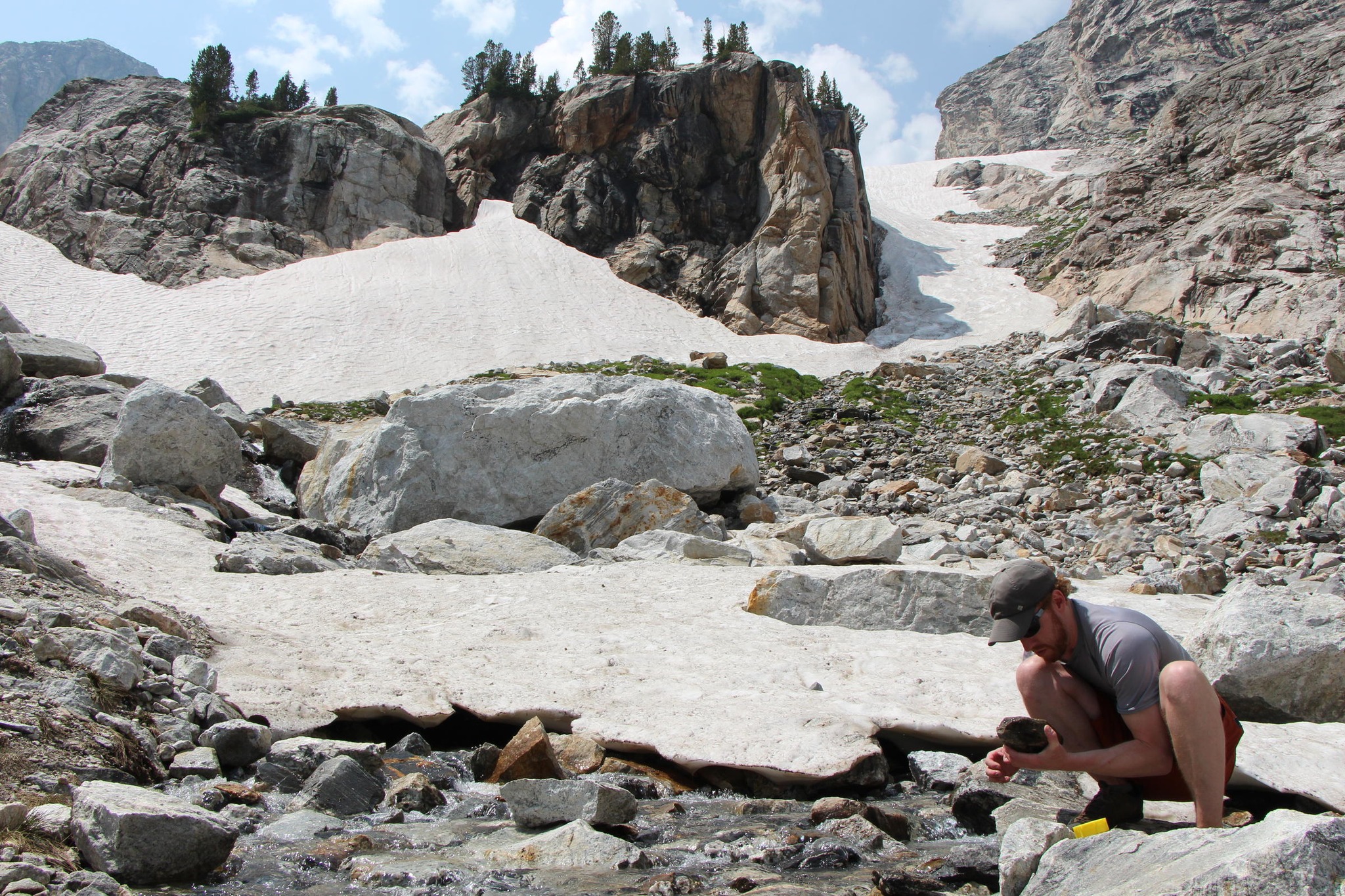
Surveying for the Rare Stonefly, Gaufinia cristata, to Inform Management ($24,529)
Principal investigator: Scott Hotaling, Assistant Professor, Department of Watershed Sciences, Utah State University
Agency: U.S. Forest Service
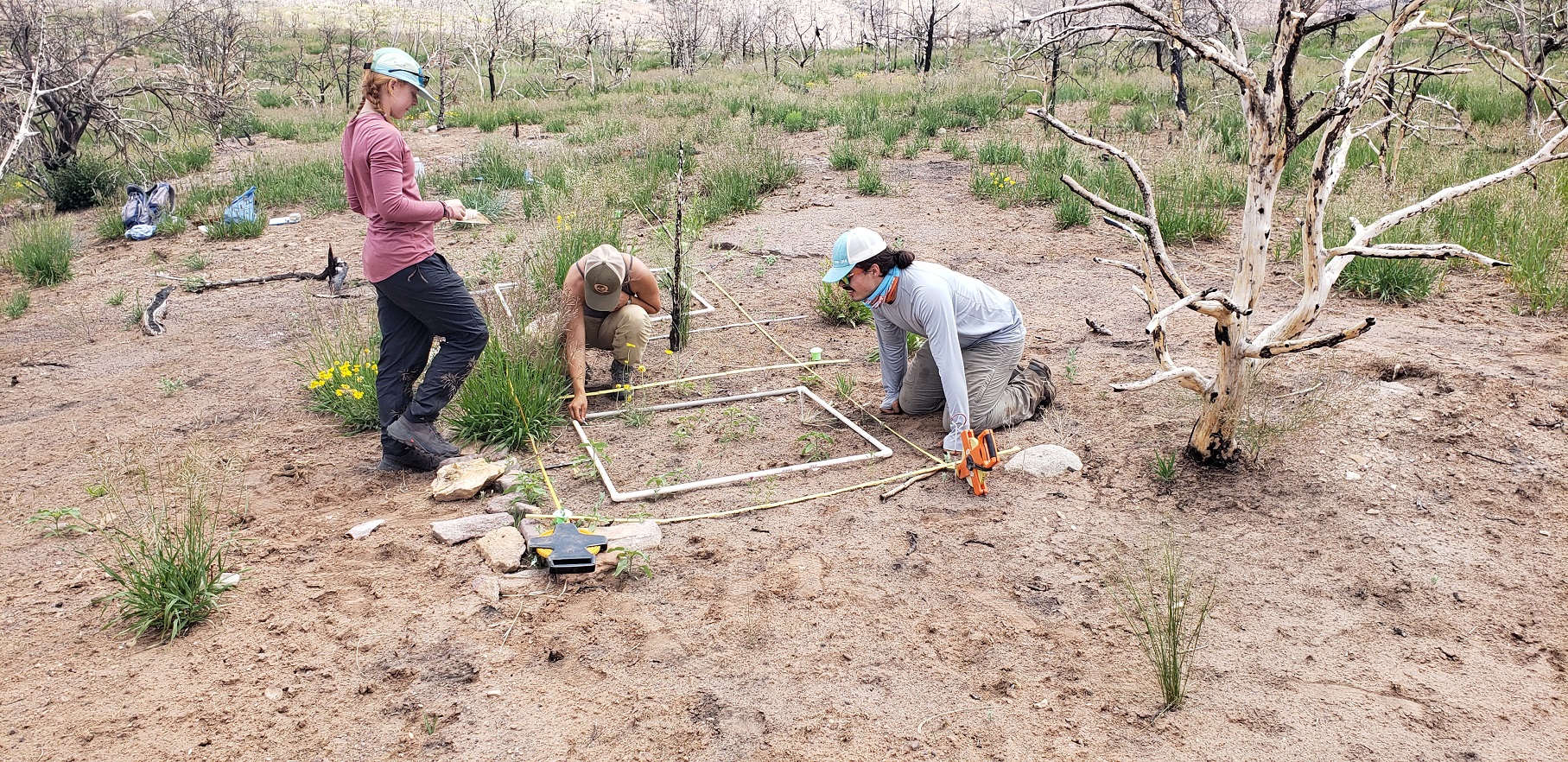
Pack Creek Fire Restoration in the Pinyon-Juniper Forest ($25,360)
Principal Investigator: Rebecca Finger-Higgens, Ecologist, US Geological Survey, Southwest Biological Science Center
Agency: U.S. Forest Service

Impacts of Increasing Noise and Bighorn Sheep ($13,110)
Principal Investigator: Joel Berger, PhD – University Chair in Wildlife Conservation, Colorado State University
Agency: Bureau of Land Management and National Park Service
Research: What, if any, impacts do increasingly noisy recreation environments have on late-phase pregnant bighorn sheep, a culturally and ecologically important icon of southern Utah’s canyon and desert landscapes?
2023

Ecological Interactions between American Pikas and Mountain Goats in the La Sal Mountains ($21,280)
A continuation from 2021
Principal Investigator: Mallory Sandoval Lambert, Utah State University
Agency: U.S. Forest Service
Research Question: Do ecological interactions exist between mountain goats and American pikas in the La Sal mountains?

Impacts of Increasing Noise on Desert Bighorn Sheep ($18,349)
Principal Investigator: Joel Berger, PhD – University Chair in Wildlife Conservation, Colorado State University
Agency: Bureau of Land Management
Research Question: What, if any, impacts do increasingly noisy recreation environments have on late-phase pregnant bighorn sheep, a culturally and ecologically important icon of southern Utah’s canyon and desert landscapes?

Pack Creek Fire Restoration in the Pinyon-Juniper Forest ($25,360)
Principal Investigator: Rebecca Finger-Higgens, Ecologist, US Geological Survey, Southwest Biological Science Center
Agency: U.S. Forest Service
Research Question: Do pre-fire forest thinning programs and post-fire seeding and erosion control construction expedite pinyon-juniper forest recovery following the Pack Creek fire?

Tracking the Timing and Dynamics of Colorado River Canyon Incision through Study of River Terraces at Dewey, UT ($5,000)
Principal Investigator: Joel L. Pederson, Geosciences, Utah State University
Agency: Bureau of Land Management
Research Question: What is the history of Colorado River canyon cutting?

Assessing the Health and Vulnerability of Scattered Old-Growth Ponderosa Pine in Southern Utah ($24,989)
Principal Investigator: Larissa Yocom, Utah State University Department of Wildland Resources
Agency: Bureau of Land Management
Research Question: What factors are leading to the decline of old-growth ponderosa pine in southern Utah, and what management activities benefit these trees?
2022

Ecological Interactions between American Pikas and Mountain Goats in the La Sal Mountains ($8,000)
Principal Investigator: Mallory Sandoval Lambert, Utah State University
Agency: U.S. Forest Service
Research Question: Do ecological interactions exist between mountain goats and American pikas in the La Sal mountains?

Investigations in Basketmaker II-Pueblo I Community Patterns, the Foundations of Ancestral Puebloan Community in Allen and Chippean Canyons, Bears Ears National Monument ($19,318)
Principal Investigator: Donald C. Irwin, District Archaeologist, Manti-La Sal National Forest, Moab-Monticello Ranger District
Agency: U.S. Forest Service
Research Question: This project will focus on investigating the origins and developments of the Ancestral Puebloan community in Allen and Chippean Canyons.
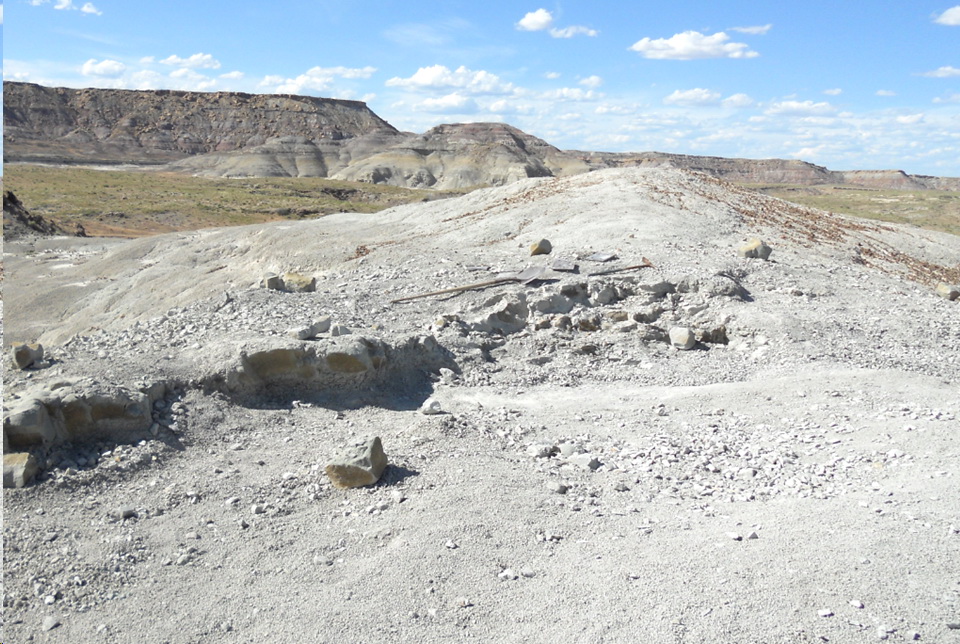
Continued Excavation of the Cisco Mammal Quarry: a Rich Small Vertebrate Site in the Upper Jurassic Morrison Formation ($9,630)
A Continuation from 2020
Principal investigator: Brian M. Davis, PhD., Associate Professor, Department of Anatomical Sciences and Neurobiology, University of Louisville
Agency: Bureau of Land Management
Research question: What will new, well-preserved specimens of small vertebrates (e.g., dinosaurs, squamates, mammals) tell us about terrestrial ecosystem evolution at the end of the Jurassic in western North America?
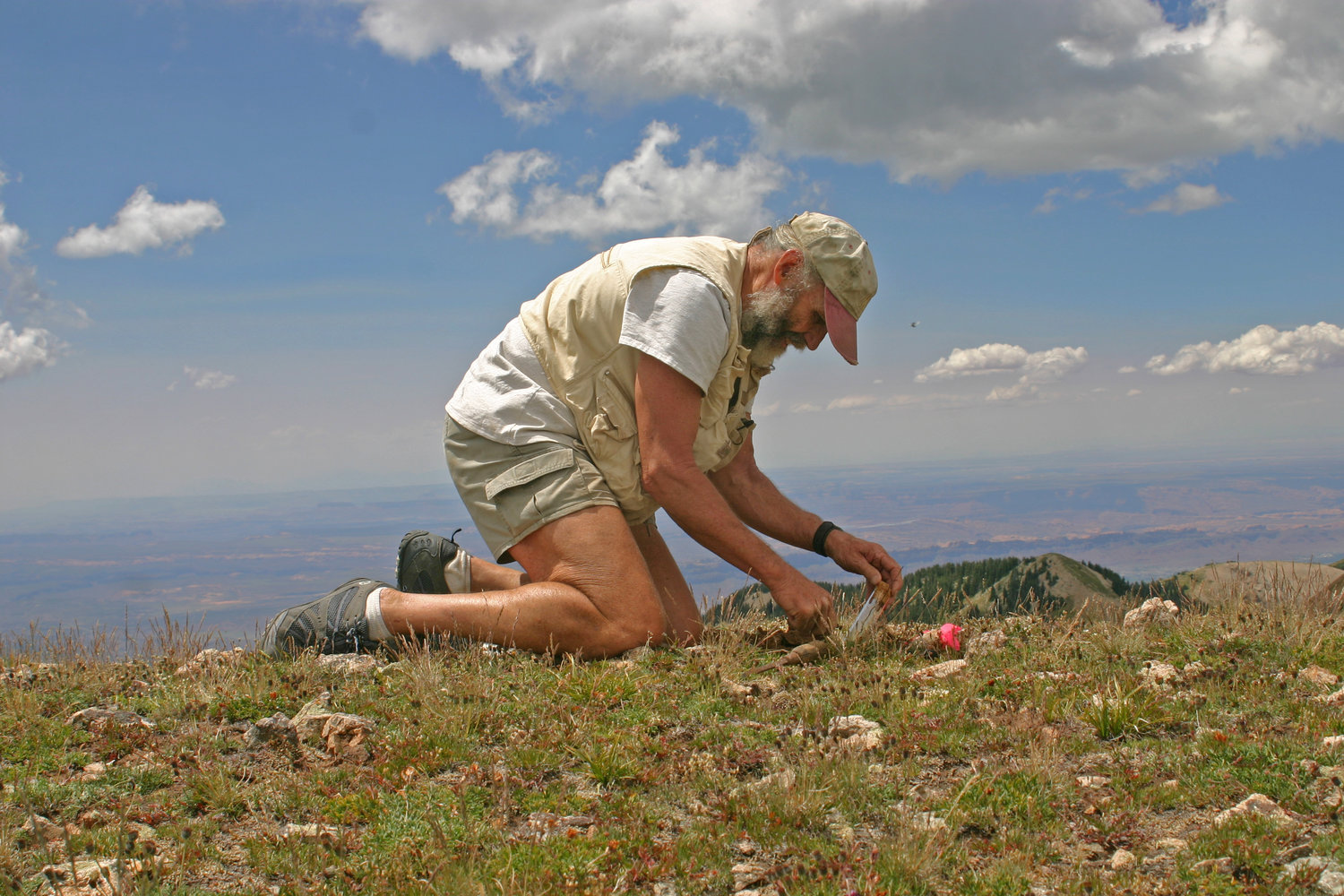
La Sal Mountain Alpine Arthropod Communities: Establishing Baseline Conditions - Year 6 ($13,200)
A continuation from 2019.
Principal investigator: Tim Graham, PhD, University of Utah & Northern Arizona University
Agency: U.S. Forest Service
Research question: Will introduced mountain goats significantly alter alpine pollinator and ground-dwelling arthropod community structure, either directly, or indirectly via their effects on alpine plant communities?
2021

CNHA Rolls 2020 Discovery Pool Grants into 2021
The CNHA Board of Trustees approved over $65,000 in funding for seven Discovery Pool Grants. The spring research season hit about the same time as the entire country began to lockdown. Paleontologists, scientists, and scholars were unable to put teams in the field to complete the research requirements for obtaining their grants. During the December 2020 board meeting, the trustees voted to roll funding for all seven projects into 2021.
2020
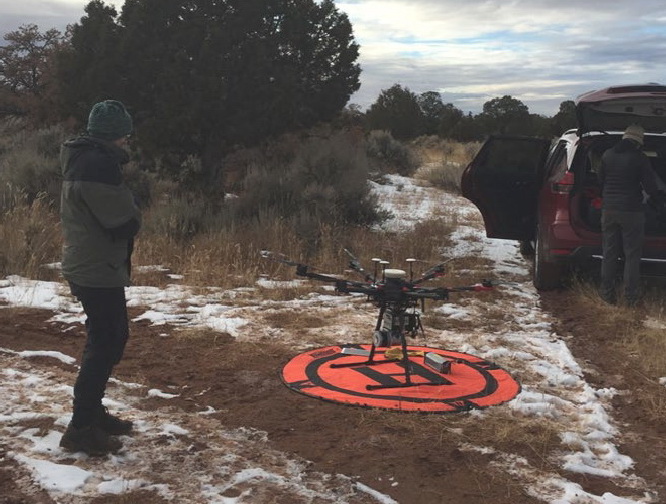
Drone-based Sensing of Chaco-Era Roads ($4,888)
Principal Investigator: Dr. Bill Lipe, Prof. Emeritus, WA State University
Agency: Bureau of Land Management
Research Question: Effectiveness of drone-based remote sensing of ancient roads in a variety of ground cover environments in southeast Utah?
CNHA Newsletter Article: Drone-based Sensing of Chaco-Era Roads in Southeastern Utah

Bears Ears Paleontology ($6,977)
Principal Investigator: Dr. Adam Huttenlocker, Assistant Professor, Department of Integrative Anatomical Sciences, Unversity of Southern California, and Research Associate, Carnegie Museum of Natural History
Agency: Bureau of Land Management
Research Question: How are Utah’s oldest (pre-dinosaur) land-living vertebrates connected to those found outside the southwest, and what do they tell us about western North America’s changing animal communities during the late Paleozoic icehouse-hothouse transition?
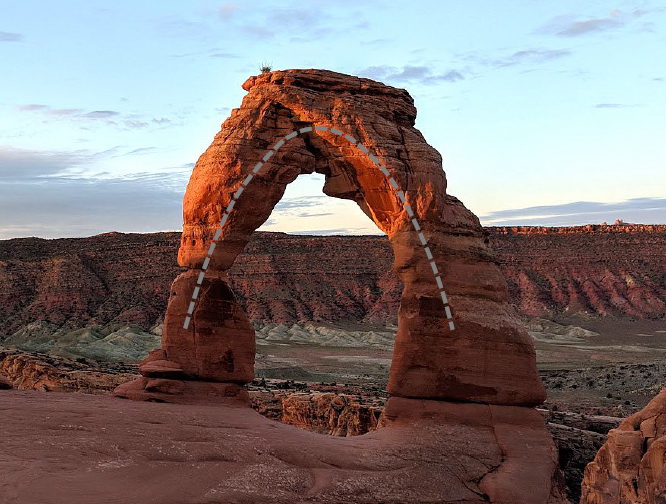
Gravitational Stress Analysis of Natural Rock Arches ($5,000)
Principal investigator: Dr. Jeffrey R. Moore – University of Utah, Department of Geology & Geophysics
Agency: National Park Service
Research question: How do gravitational stresses in natural arch forms vary with geometry? Can a metric be developed that allows comparison among arches with different scale and form?
CNHA Newsletter Article: Decoding the Language of Stone

La Sal Mountain Alpine Arthropod Communities: Establishing Baseline Conditions - Year 5 ($9,960)
Principal investigator: Tim Graham, PhD, University of Utah & Northern Arizona University
Agency: U.S. Forest Service
Research question: Will introduced mountain goats significantly alter alpine pollinator and ground-dwelling arthropod community structure, either directly, or indirectly via their effects on alpine plant communities?

Continued Excavation of the Cisco Mammal Quarry ($8,880)
Principal investigator: Brian M. Davis, Ph.d., Associate Professor, Department of Anatomical Sciences and Neurobiology, University of Louisville
Agency: Bureau of Land Management
Research question: What will new, well-preserved specimens of small vertebrates (e.g. dinosaurs, squadmates, mammals) tell us about terrestrial ecosystem evaluation at the end of the Jurassic in western North America?

Precursor to a Mass Extinction: Investigating Key Fossil Assemblages from the Upper Triassic Chinle Formation of the new Bears Ears National Monument, Utah. ($14,554)
Principal Investigator: Randall Irmis, Ph.d., Chief Curator & Curator fo Paleontology, Natural History Museum of Utah, Associate Professor, Dept of Geology & Geophysics, University of Utah
Agency: Bureau of Land Management
Research question: Do the Late Triassic fossil resources of Bears Ears National Monument display latitudinal differences from contemporaneous fossils elsewhere in the southwest, and is there any evidence of ecosystem stress leading up to the end-Triassic mass extinction?
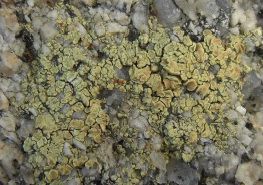
Lichens as Tools to Monitor Disturbances in the La Sal Mountains ($15,675)
Principal Investigator: Steve Leavitt, Brigham Young University
Agency: U.S. Forest Service
Research question: Can we develop new approaches for monitoring ecological health in the La Sal Mountains using lichens? Can genome-scale data provide crucial information to characterize lichen diversity?
2019
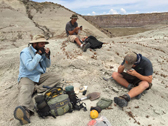
Continued Excavation of the Cisco Mammal Quarry ($10,892)
Principal Investigator: Brian M. Davis, PhD, University of Louisville
Agency: Bureau of Land Management
Research question: What will new, well-preserved specimens of small vertebrates (e.g., dinosaurs, squamates, mammals) tell us about terrestrial ecosystem evolution at the end of the Jurassic in western North America?
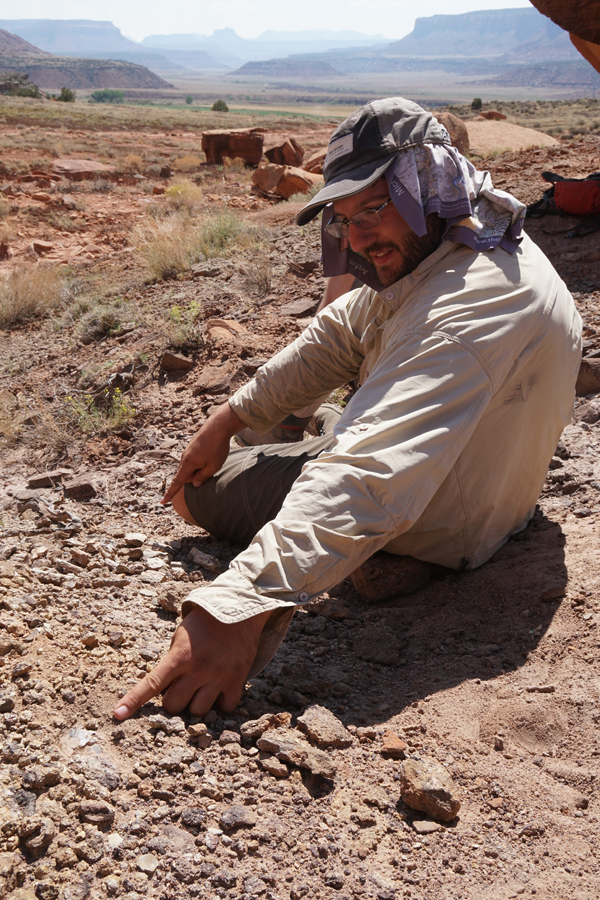
Precursor to a Mass Extinction: Investigating Key Fossil Assemblages from the Upper Triassic Chinle Formation of the Bears Ears National Monument, Utah ($16,737)
Principal investigator: Randall Irmis, PhD, Natural History Museum of Utah & University of Utah
Agency: Bureau of Land Management
Research question: Do the Late Triassic fossil resources of the Bears Ears N.M.display latitudinal differences from contemporaneous fossils elsewhere in the Southwest, and is there any evidence of stress leading up to the end-Triassic mass extinction?

La Sal Mountain Alpine Arthropod Communities: Establishing Baseline Conditions - Year 4 ($9,960)
Principal investigator: Tim Graham, PhD, University of Utah & Northern Arizona University
Agency: U.S. Forest Service
Research question: Will introduced mountain goats significantly alter alpine pollinator and ground-dwelling arthropod community structure, either directly, or indirectly via their effects on alpine plant communities?
2018
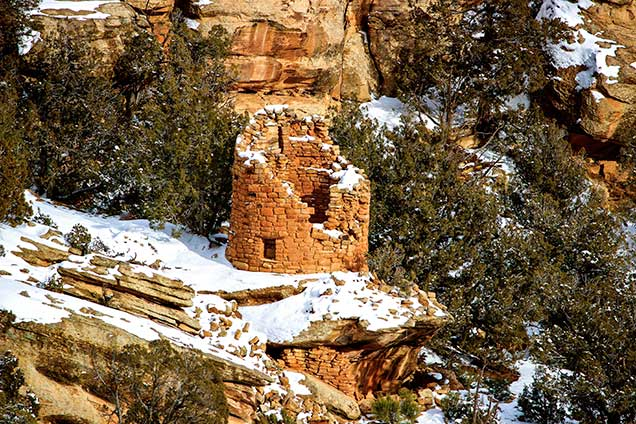
Ethnographic Study of Canyons of the Ancients National Monument ($15,711.74)
Principal Investigator: T. J. Ferguson, (Anthropological Research, LLC)
Agency: Bureau of Land Management
Research question: What cultural and historical connections do contemporary tribes have with the archaeology, natural resources, and land forms of CANM? How is the Monument’s tribal history preserved and passed down within tribal communities today? How can tribal involvement be included in interpretation, preservation, and management of CANM?

Continued Excavation of the Cisco Mammal Quarry ($10,867)
Principal Investigator: Brian M. Davis, PhD, University of Louisville
Agency: Bureau of Land Management
Research question: What will new, well-preserved specimens of small vertebrates (e.g., dinosaurs, squamates, mammals) tell us about terrestrial ecosystem evolution at the end of the Jurassic in western North America?

Inventory and Salvage of Key Fossil Assemblages from the Upper Triassic Chinle Formation ($12,600)
Principal investigator: Randall Irmis, PhD, Natural History Museum of Utah & University of Utah
Agency: Bureau of Land Management
Research question: Do the Late Triassic fossil resources of the Bears Ears National Monument display latitudinal differences from contemporaneous fossils elsewhere in the Southwest, and is there any evidence of stress leading up to the end-Triassic mass extinction?

Alpine Lichen Diversity in the La Sal Mountains - A Resource for Evaluating the Impact of Ecological Disturbances ($10,162)
Principal investigator: Steven Leavitt, Brigham Young University
Agency: U.S. Forest Service
Research question: How distinct is the alpine lichen community in the La Sal Mountains relative to comparable sites in western North America?

La Sal Mountain Alpine Arthropod Communities: Establishing Baseline Conditions - Year 3 ($9,960)
Principal investigator: Tim Graham, PhD, University of Utah & Northern Arizona University
Agency: U.S. Forest Service
Research question: Will introduced mountain goats significantly alter alpine pollinator and ground-dwelling arthropod community structure, either directly, or indirectly via their effects on alpine plant communities?
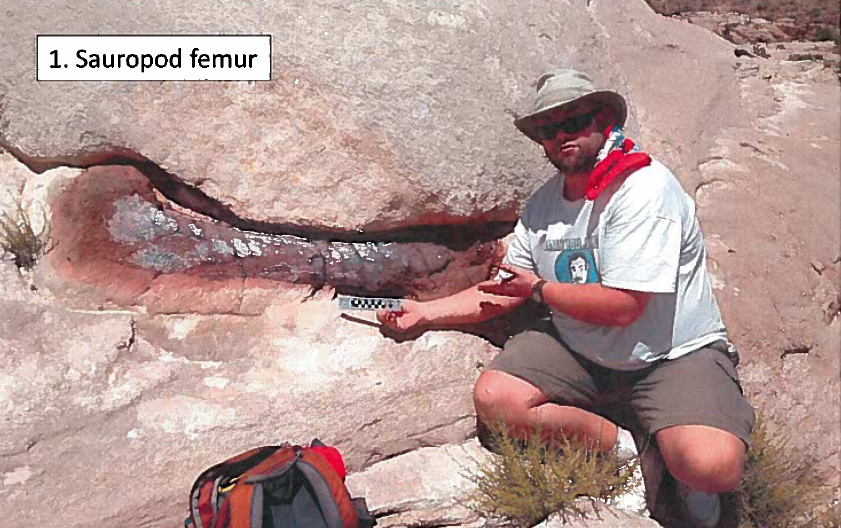
A New, Diverse Dinosaur and Plant Community in the Salt Wash Member of the Upper Jurassic Morrison Formation ($3,880)
Principal Investigator: Mathew Wedel, PhD, Western University of Health Sciences
Agency: Bureau of Land Management
Research: Document vertebrate and plant fossils at the Tal Site (Hanksville area), gather photo & video documentation for scientific research and public outreach.
2017
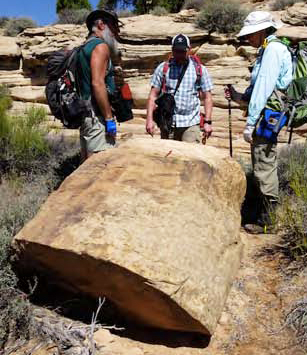
Enigmatic Features of the Jurassic Navajo Sandstone, Grand and San Juan Counties ($14,973)
Principal Investigator: Marjorie A. Chan, University of Utah; co-investigators: Stephen T. Hasiotis and Judith Totman Parrish
Agency: Bureau of Land Management; National Park Service
Research question: What are the origins and implications of enigmatic pipes and bounding surfaces with trace fossils in the Navajo Sandstone of the Moab Area?

Continued Excavation of the Grey Hills Site: a Rich, Small Vertebrate Locality ($12,545)
Principal Investigator: Brian M. Davis, PhD, University of Louisville
Agency: Bureau of Land Management
Research question: What will new, well-preserved specimens of small vertebrates tell us about terrestrial ecosystem evolution at the end of the Jurassic in western North America?
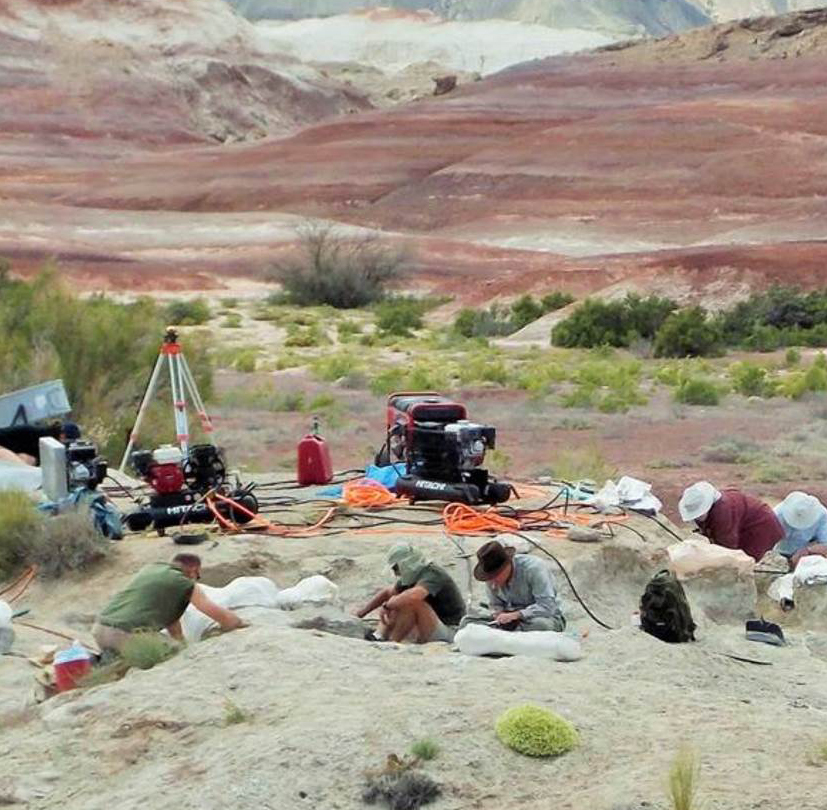
Excavation of Dinosaurs at the Hanksville-Burpee Quarry
Principal investigator: Michael D’Emic, Adelphi University
Agency: Bureau of Land Management
This research aims to excavate dinosaurs from the Hanksville-Burpee Quarry while simultaneously offering a unique public education experience.

Linking Comb Ridge to the Rest of Triassic Utah
Principal investigator: Robert Gay, Museums of Western Colorado Dinosaur Journey
Agency: Bureau of Land Management
Research question: How do the Early Mesozoic faunas of Comb Ridge relate to the other, better-known localities across southeastern Utah?

La Sal Mountain Alpine Arthropod Communities: Establishing Baseline Conditions - Year 2 ($9,960)
Principal investigator: Tim Graham, PhD, University of Utah & Northern Arizona University
Agency: U.S. Forest Service
Research question: Will introduced mountain goats significantly alter alpine pollinator and ground-dwelling arthropod community structure, either directly, or indirectly via their effects on alpine plant communities?
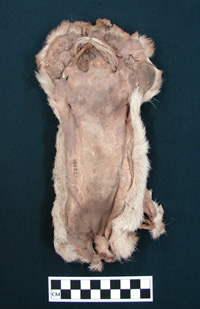
Documentation of Perishable Artifacts at the American Museum of Natural History ($11,560)
Principal Investigator: Laurie D. Webster, University of Arizona
Agency: Bureau of Land Management
Research: Documentation of archaeological perishable artifacts from southeastern Utah
2016

Cedar Mesa Building Murals and Social Identities Project: Phase III ($5,000)
Principal Investigator: Benjamin A. Bellorado
Agency: Bureau of Land Management
Research Question: How did Ancestral Puebloans use building murals to signal individual and community identities and their participation ancient religious networks in the thirteenth century A.D. in southeastern Utah?

Excavation of a New Small Vertebrate Locality in the Upper Jurassic Morrison Formation ($7,578)
Principal investigator: Brian M. Davis, PhD, University of Louisville.
Agency: Bureau of Land Management
Research Question: What will new, well-preserved specimens of small vertebrates (e.g. dinosaurs, squamates, mammals) tell us about terrestrial ecosystem evolution at the end of the Jurrasic in western North America?

Paleontological Investigations of Comb Ridge, Utah; a Public Education Field School Principal investigator ($4,900)
Principal investigator: Robert Gay, Museums of Western Colorado Dinosaur Journey
Agency: Bureau of Land Management
Research Question: How does the early Mesozoic fauna of Comb Ridge relate to the better known fossil localities in Utah and Arizona?

Documentation of Perishable Artifacts at the American Museum of Natural History
Principal investigator: Laurie D. Webster, University of Arizona
Agency: Bureau of Land Management

Prehistoric Site Documentation and Chronology on BLM Sites in SE Utah ($4,950)
Principal investigator: Thomas C. Windes, University of New Mexico.
Agency: Bureau of Land Management
Research Question: What are the chronology perimeters of the Pueblo III occupations in the SE Utah Canyon Country and how does this coincide with the larger migrations and abandonments of the Northern San Juan?

Potential Impacts from Introduced Mountain Goats on the La Sal Mountains Alpine Arthropod Communities: Baseline Conditions ($9,960)
Principal investigator: Tim Graham, PhD, Northern Arizona University.
Agency: U.S. Forest Service
Research Question: Will introduced mountain goats significantly alter alpine pollinator and ground-dwelling arthropod community structure, either directly, or indirectly, via their effects on alpine plant communities?
2015

Cedar Mesa Building Murals and Social Identities Project: Phase II ($5,000)
Principal Investigator: Benjamin A. Bellorado, M.A., University of Arizona
Agency: Bureau of Land Management
Research Question: How did Ancestral Puebloans use building murals to signal individual and community identities and their participation ancient religious networks in the twelfth and thirteenth centuries A.D. in Southeastern Utah?
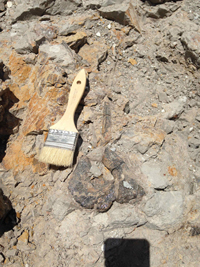
Excavation of New Fossil Localities in Cedar Mountain Formation ($8,165)
Principal Investigator: Lindsay E. Zanno, Ph.D., Director, Paleontology & Geology Research Lab
Agency: Bureau of Land Management
Research: Biodiversity and biogeographical assessment of a new Late Cretaceous dinosaur fauna based on discovery, description, and quantitative analyses of remains discovered in 2012 and 2013.
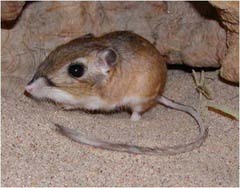
Mammal Response to Holocene Climate and Land Use Change on the Colorado Plateau ($15,000)
Principal Investigator: M. Allison Stegner, UC berkeley, UC Museums of Paleontology and Vertebrate Zoology
Agency: Bureau of Land Management
Research Question: How does the mammal community in Canyon Rims change through time, and how does it compare to the modern mammal community?
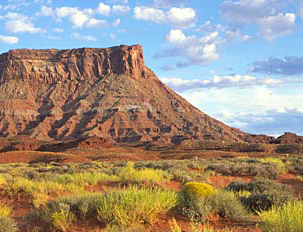
Newly Discovered Fossil Assemblages and Their Paleoenvironmental Context in the Upper Chinle Formation ($15,385)
Principal investigator: Andrew R.C. Milner
Agency: Bureau of Land Management
Research: This research will test for paleolatitudinal differences in paleoenvironment and biota over the last eight million years of the Triassic Period.
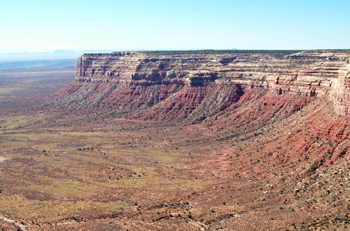
Paleontological Investigations of Comb Ridge, Utah ($3,335.96)
Principal investigator: Robert J. Gay
Agency: Bureau of Land Management
Research: How does the early Mesozoic fauna of Comb Ridge relate to the better known fossil localities in Utah and Arizona?
2014
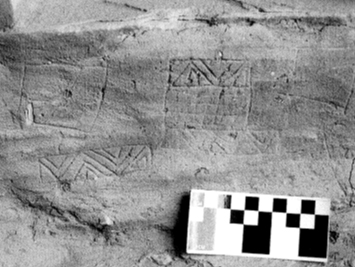
Cedar Mesa Building Murals and Social Identities Project ($5,000)
Principal Investigator: Benjamin A. Bellorado, M.A., University of Arizona
Agency: Bureau of Land Management
Research Question: How did Ancestral Puebloans signal individual and community identities as well as ancient social networks in Southeastern Utah, in the twelfth and thirteenth centuries A.D.?

Excavation and Identification of the Geologically Oldest Sauropod Dinosaur in North America (BLM) ($8,695)
Principal Investigator: Brian M. Davis
Agency: Bureau of Land Management
Research Question: What is the vertebrate fossil potential of interdune deposits within the Navajo and Entrada formations (Early-Middle Jurassic, SE Utah), and what can we these fossils tell us about terrestrial ecosystem evolution in the Jurassic of North America?

Excavation of New Fossil Vertebrates Localities in the Upper Jurassic and Upper Cretaceous Cedar Mountain Formation (BLM) ($5,000)
Principal Investigator: Lindsay E. Zanno, Ph.D., Director, Paleontology & Geology Research Lab
Agency: Bureau of Land Management
Research Question: Biodiversity and biogeographical assessment of a new Late Cretaceous dinosaur fauna based on discovery, description, and quantitative analyses of remains discovered in 2012 and 2013.
2013
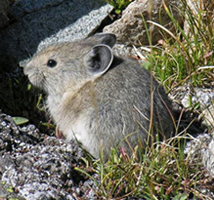
Distance and Temperature Effects on Pika Forage ($11,873)
Principal investigator: Jim Fowler, Research Ecologist, USFS Rocky Mountain Research Station
Agency: U.S. Forest Service
Research question: How does plant species composition and soil surface temperature change with distance from pika safe sites?
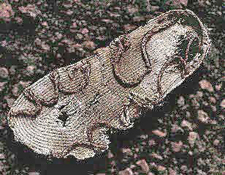
Documentation of Perishable Artifacts at the Museum of the American Indian ($18,625)
Principal investigator: Laurie D. Webster
Agency: Bureau of Land Management
Research: Documentation of archaeological perishable collections from southeastern Utah

Gardeners and Gatekeepers: Pueblo I Community Study II ($12,779)
Principal investigator: Donald C. Irwin
Agency: U.S. Forest Service
Research: The principle aim of this project is to collect additional field data from a selection of important Pueblo I sites in Allen Canyon and to investigate the development and nature of the Pueblo I community in the Allen Canyon area.

Phase II of Analysis of Ceramic Sherd Collections from Hovenweep National Monument ($15,500)
Principal investigator: Jonathan Till, Mark Bond, Tamara Desrosiers
Agency: National Park Service
Research: Basic and specialized analysis of Hovenweep’s ceramic sherd collection will provide important data to interpret the archeological sites that the NPS manages and protects, and will contribute to a developing regional database of Mesa Verde region pottery.
2012

Ceramic Analysis of Sherd Collections from Hovenweep National Monument ($15,000)
Principal investigator: Mark Bond, Jonathan Till, Ben Bellorado
Agency: National Park Service
Research: This project seeks to bring Hovenweep’s ceramic collection together for examination to obtain data that can be used to answer research questions and provide interpretive information.

Completion of Documentation of Perishable Artifacts ($15,000)
Principal Investigator: Laurie D. Webster
Agency: Bureau of Land Management
Research: Documentation of archaeological perishable collections from southeastern Utah at the field museum
2011
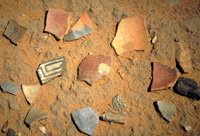
Chemical Matching of Ceramics to Material Source Areas—Goodman Point ($11,000.00)
This study will use chemical matching of ceramics from the Goodman Point Unit of Hovenweep National Monument to material source areas to determine social and economic ties of prehistoric groups through time.
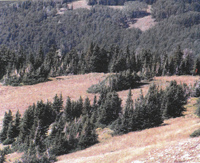
Climate Driven Changes in Englemann Spruce Stands in the La Sal Mountains ($9,600.00)
How will global warming and changing precipitation patterns effect timberline elevation and spruce tree stands in the La Sal Mountains?
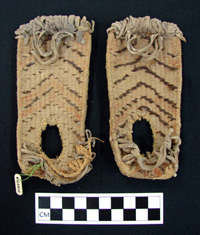
Documentation of Perishable Artifacts ($7,395.00)
This project will survey and photodocument archaeological textiles, baskets, and other perishable artifacts in the Green and Lang collections at the Field Museum of Natural History from Grand Gulch and adjacent public lands.

Gardeners and Gatekeepers: Pueblo I Community in Allen Canyon ($12,726.00)
The goal of this project is to collect field data from the Pueblo I period Ancestral Puebloan community and investigate the development and nature of the Pueblo I community in the area.1
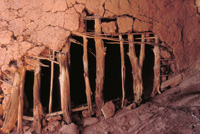
Structural Wood Documentation and Dendrochronology in SE Utah ($7,980.00)
The project goals are to document the perisible structural wood resources of standing prehistoric cliff structures on a site-by-site basis. The information gathered will broaden our understanding of 12th and 13th century Puebloan settlement and abandonmen.
2010
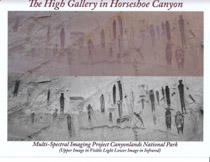
Multi-Spectral Imaging of Rock Art in Canyonlands National Park ($15,000.00)
Private contractor Bud Turner continues his work using spectral photography documenting pictographs and reveal hidden elements of this ancient artwork, aiding in their preservation and restoration.
2009

Alpine Habitat Baseline Study ($14,996)
Principal Investigator: Jim Fowler, Barb Smith
Agency: U.S. Forest Service
Research: Erigeron mancus (La Sal daisy) elevational density gradient as a baseline to detect future climate change in La Sal Mountain alpine habitats.
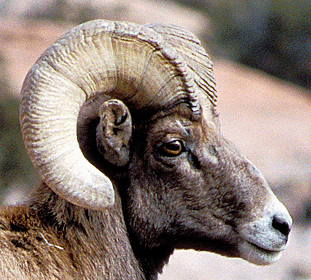
Bighorn Sheep Study ($5,000)
Principal Investigator: Pam Riddle, Bureau of Land Management
Agency: Bureau of Land Management
Research: Determining migration corridors used by desert bighorn sheep rams and compiling 12 years of mortality and home range data on ram and ewe home ranges in southeastern Utah.
2008
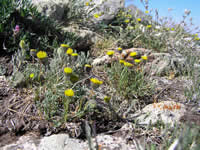
Alpine Habitat Baseline Study ($2,400)
Principal Investigator: Barb Smith, District Wildlife Biologist
Agency: U.S. Forest Service
Research: Is recreational use of the alpine portions of the La Sal Mountains impacting soil and vegetation resources?

Aquatic Macroinvertebrate Surveys ($15,000)
Aquatic macroinvertebrate surveys on the Green River in Desolation and Grey Canyons (pre-dam vs. current condition).
Principal investigator: Dr. Mark Vinson and Dr. Eric Dinger
Agency: Bureau of Land Management
Research question: What is the diversity/distribution of aquatic invertebrates of the Desolation/Gray/Labyrinth/Stillwater canyons of the Green River and San Juan River? What is the importance of distance from dams versus importance of major tributaries in recovering pre-dam aquatic communities?
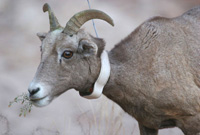
Bighorn Sheep Collaring ($15,000)
Principle Investigator: Bill Sloan
Agency: National Park Service
Research Question: Will GPS enabled tracking collars provide habitat use and population dynamics data sufficient for the NPS to manage Desert Bighorn Sheep in remote areas of Canyonlands NP?

Documenting a Threatened Cultural Landscape ($15,000)
Principle Investigator: Dr. Catherine M. Cameron, University of Colorado
Agency: Bureau of Land Management
Research Question: What does the archaeological record reveal about changing cultural use of the Butler-Comb section of the San Juan River corridor over the past 12,000 years?
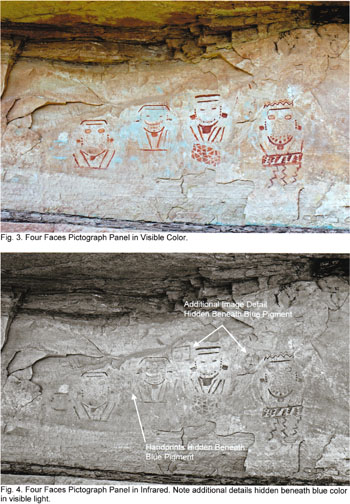
Multi-Spectral Imaging of Rock Art in Canyonlands National Park ($15,000)
Principle Investigator: Bud Turner
Agency: National Park Service
Research: Create a baseline photographic record of each Barrier Canyon Style pictograph panel from which to monitor future changes through time.
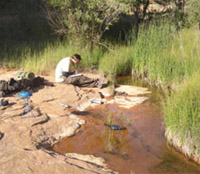
Springs, Seeps, and Hanging Garden Ecosystems ($14,178)
Principle Investigator: Dr. Dustin Perkins, Dr. David Thomas
Agency: National Park Service
Research Question: How do the biological and physical components of springs, seeps, and hanging gardens vary along the gradient of anthropogenic activities?
2007

Assess Feasibility of Using GPS Collars to Study Remote Population of Desert Bighorn Sheep
Principal investigator: Bill Sloan, National Park Service
Agency: National Park Service
Research question: Will GPS enabled tracking collars provide habitat use and population dynamics data sufficient for the NPS to manage Desert Bighorn Sheep in remote areas of Canyonlands National Park?
Reference 2008 project for final report.
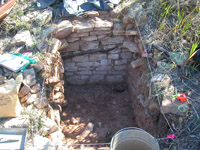
Tree-Ring Dating and Macrobotanical Analysis at Goodman Point
Crow Canyon Archeological Center was awarded a grant for studying the Goodman Point unit of Hovenweep National Monument.
Principal investigator: Mark D. Varien, Ph.D
Agency: Crow Canyon Archaeological Center and the National Park Service Southeast Utah Group, Hovenweep National Monument
Research question: When did construction begin at Goodman Point Pueblo? How did the Pueblo grow and how often was it remodeled? When was the pueblo abandoned? What was the subsistence base of the Goodman Point Pueblo inhabitants? Was the subsistence base deteriorating, and if so, did the deterioration contribute to the depopulation of the Pueblo?
Public Land News
May 2025 Newsletter
SEUG at Easter Jeep Safari Virtual Tour of River House Utah Avalanche Center Wraps Up the Season Hanksville-Burpee Dinosaur Quarry Tours Volunteer Opportunities in Southeastern Utah Parks and Monuments Soundtrack of Arches and Canyonlands Upcoming Even
